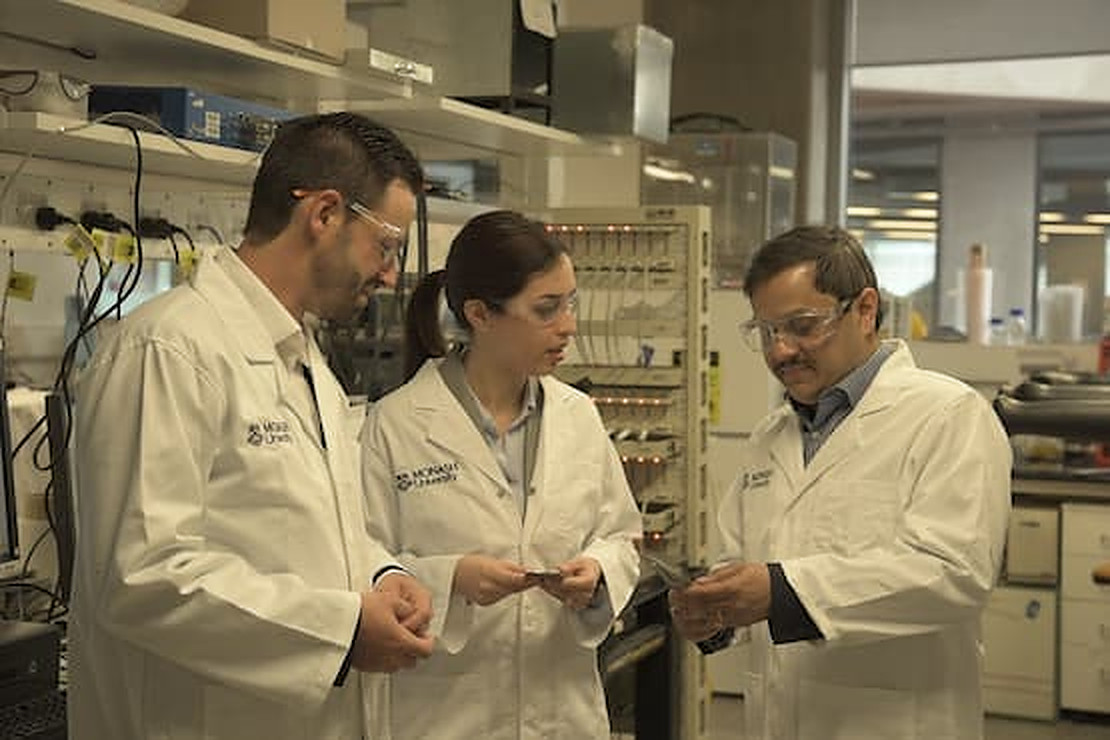From pv magazine Global
A team of researchers from Monash University’s Faculty of Engineering have redesigned the heart of a lithium-sulfur battery, creating a new interlayer that allows for exceptionally fast lithium transfer, as well as an improvement in the performance and lifetime of the batteries.
“It’s world-leading,” said Professor Matthew Hill, deputy head of the university’s Department of Chemical and Biological Engineering. “A lot of our research has been about making the battery more stable and lasting longer, so this particular discovery is really exciting.”
As the world’s switch to emissions-free electrification accelerates, lithium batteries are playing an increasingly vital role as energy storage tools to facilitate that transition. Lithium-ion batteries are the dominant technology, but Hill said lithium-sulfur batteries already offer higher energy density and reduced costs. They can store two to five times more energy per kilogram than the lithium-ion alternatives but previously, the electrodes in lithium-sulfur batteries deteriorated rapidly during the recharge process.
The research team believes it has fixed that issue by developing a battery interlayer that allows for very fast charging, as well as an improvement in the life and performance of the batteries.
“The interlayer stops polysulfides, a chemical that forms inside this type of battery, from moving across the battery; polysulfides interfere with the anode and shorten the battery life,” Hill said. “The new interlayer overcomes the slower charge and discharge rates of previous generation lithium-sulfur batteries. It means the battery can be charged and discharged hundreds of times without failing.”
Hill said the key to this latest discovery was going against the accepted norms and conventions of lithium battery construction.
“It’s ground-breaking technology, because in a regular lithium battery there’s about half-a-dozen components that make up the battery,” he said. “Most people research those, but hardly anyone has looked at changing the interlayer or separator in the middle. They tend to be fairly standardized, and until now we’ve assumed it didn’t matter too much if you changed them. Now we’re saying it actually does; we’re going against the accepted convention.”
Hill said the development shapes as a game-changer for lithium-sulfur batteries which do not rely on metals like cobalt, nickel and manganese, which are critical minerals found in lithium-ion batteries.
“These batteries are not dependent on minerals that are going to lack supply as the electrification revolution proceeds, so this is another step towards cheaper, cleaner and higher performing batteries that could be made within Australia,” he said.
This latest breakthrough, published by the Royal Society of Chemistry, comes just weeks after scientists in the United States announced that they have developed a lithium-sulfur battery using a commercially available carbonate electrolyte, that retained more than 80% of its initial capacity after 4000 cycles.
The group used a vapor deposition process, which unexpectedly produced a form of sulfur that did not react with the electrolyte, overcoming one of the key challenges for this battery chemistry.
This content is protected by copyright and may not be reused. If you want to cooperate with us and would like to reuse some of our content, please contact: editors@pv-magazine.com.









1 comment
By submitting this form you agree to pv magazine using your data for the purposes of publishing your comment.
Your personal data will only be disclosed or otherwise transmitted to third parties for the purposes of spam filtering or if this is necessary for technical maintenance of the website. Any other transfer to third parties will not take place unless this is justified on the basis of applicable data protection regulations or if pv magazine is legally obliged to do so.
You may revoke this consent at any time with effect for the future, in which case your personal data will be deleted immediately. Otherwise, your data will be deleted if pv magazine has processed your request or the purpose of data storage is fulfilled.
Further information on data privacy can be found in our Data Protection Policy.